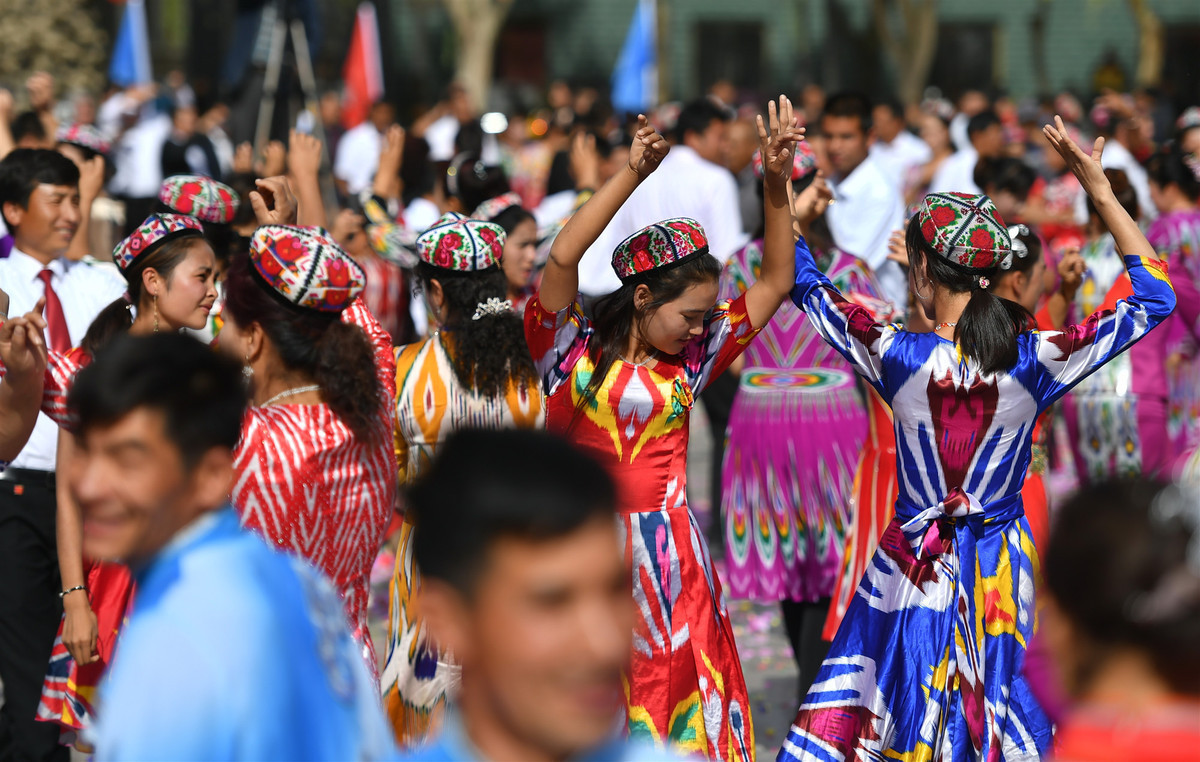Wintery Xinjiang offers warm welcome
By Niraj Lawoju | chinadaily.com.cn | Updated: 2019-09-16 14:18

Xinjiang was under a quilt of white snow when we landed at the Urumqi airport. Though my country, Nepal, is a land of majestic mountains, in my hometown snowfall is rare. So I was quite excited to see the panoramic snowy land in Urumqi.
It was February and weather in Xinjiang was freezing. A white blanket of snow stretched as far as our eyes could see. Every breath turned into white mist. Thanks to the administration of Urumqi, every corner of Xinjiang more magnificent with under a cover of white snow. We almost disregarded the chill and enjoyed every moment, even at night.
Before I landed to Urumqi, I thought life in Urumqi would not be like other Chinese cities, including Beijing. I have read news about riots and instability in Xinjiang, but, contrary to my expectation, I found Urumqi totally different. Not only did the snowy land impress me, the rather charming and smiling faces of local people and their colorful dress attracted me as well. There seemed to be no signs of despair in the smiles of people there.
The Grand Market, which we visited first, was a model market where we experienced the diverse ethnic flavor of the region. Some old women were dancing to indigenous steps. Their faces were glowing with pleasure and their pleasant mood inspired visitors to dance along. Local people, mostly youths, were enjoying a musical concert. Though we didn't understand the lyrics of the song we felt the warmth of their art. The Southern Mosque near the Grand Market is an iconic signature monument of Urumqi.
Even on snowy days, roads were filled with traffic.
Behind our hotel was a grand statue of Buddha. Wow! That was what I never expected there. I thought there must be mosques and a few churches in Xinjiang, but never expected any Buddhist statue. It made me feel proud, as I am from the Buddha's land.
We went to a restaurant near the Southern Mosque. Salient features of the restaurant were the local food they serve and the traditional cultural program they perform. We experienced the prosperous ethnic culture of Xinjiang through ethnic dances and songs. Cultural performances were so energetic, not only did the artist dance and sing, almost all in the audience, people from various countries, participated in the performances in their own ways.
Our next destinations were some of the major mosques in Urumqi. We found mosques there, more academic institutions where Islam is taught as knowledge of life rather than any dogma. Imams at the mosques were happy to meet some Muslims with us, who share the same religious faith. Really impressive was the intricate art and architecture inside the mosque. An imam trained in Libya described the religious life of the Xinjiang people to us.
Xinjiang is a land of various ethnicities and religions. History has framed Xinjiang as the large lake where tributaries from various civilizations meet and intermingle with each other to frame a new society.
In one of the community centers, a large monument of a pomegranate was constructed to symbolize the ethnic unity among the various communities in Xinjiang. Children in the center were really charming, like flowers in a garden. They showed their talent and asked us to dance with them. Children there are taught two languages - one their mother language and Mandarin Chinese. They sang the Chinese national anthem and showed their deep respect to their motherland.
Xinjiang is one of the major parts of the Belt and Road Project. It is a main entrance of central and west Asia to China. Xinjiang was a trade hub during the era of the Silk Road and hence a conjunction of various world civilizations. Gold was one of the major trade stuffs during those days. Xinjiang has continued the tradition of the gold trade. We were amazed to see the grand collection of gold and jewelry during our visit to the Gold Park in Urumqi.
During our visit, some leaders of CPC local committees shared their experiences of poverty alleviation in various areas of Xinjiang. Impressive was their attempt to narrow-down the cultural and economic gap between various ethnic groups there. Xinjiang government, with assistance of the central government, has laid a strong foundation of economic and infrastructure development. Moreover, some developed Chinese metropolises, such as Beijing, Shanghai and Guangzhou, are assisting in the economic and infrastructural development of Xinjiang through technological aid, knowledge and human resources sharing.
Some so-called international media have been propagating "terror" and "pathetic" people's life in Xinjiang. But we found all such propaganda to be fake and politically motivated when we witnessed on-the-ground reality there. People seem busy with their businesses. Modern industries are flourishing at a higher pace.
When we were on the way back from Urumqi, the day was warm and brighter. From the sky, we wave our hands to bid farewell to the beautiful and magnificent heavenly city, Urumqi.
Niraj Lawoju is a Kathmandu-based journalist.
The opinions expressed here are those of the writer and do not represent the views of China Daily and China Daily website.
























